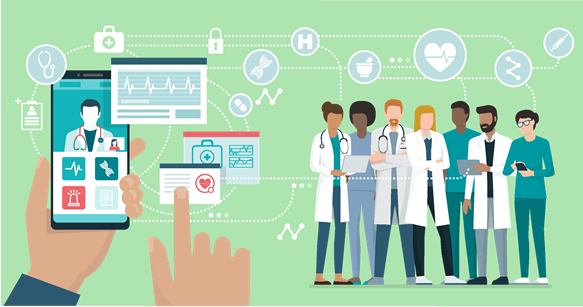






The Benefits of Interactive Learning for Healthcare: Achievement and Understanding

This blog post continues a series about interactive learning featuring HealthStream's partner, EBSCO Health.
The healthcare industry is transforming the way it educates and prepares its workforce to meet initial and ongoing learning demands and workforce shortages. One new trend in this transformation is the use of interactive learning, a participatory approach to training that redefines the roles of teacher and student and directly engages students in their own education. HealthStream recently interviewed partner EBSCO Health's Chief Nursing Officer, Diane Hanson, RN, BSN, MM on their use of interactive learning and trends we are likely to see in this field over the next several years.
What are the benefits of interactive learning for the healthcare student?
Interactive learning has proven to improve overall student achievement of learning goals. Healthcare students benefit through the incorporation of a variety of teaching-learning modalities to augment learning. With interactive learning approaches, students have time outside the classroom to study at their own pace, re-review material as often as needed, and focus on areas where guidance from an instructor could assist in solidifying concepts further. Students also benefit through interaction with other students and getting more timely feedback. Students' concurrent access and use of e-resources on mobile platforms augments classroom discussion and participation in interactive activities.
Where is interactive learning best applied in the healthcare industry? Are there certain demographic segments or clinical areas that see the most benefit?
Interactive learning can be applied broadly in the healthcare industry. As the world has transformed fully into a digital society, the desire and demand for interactive learning modalities will only increase. Transforming classroom experiences from lecture to interaction learning deepens the understanding of complex concepts. Healthcare is complex and multi-faceted and can't effectively be taught using only traditional classroom approaches. Current healthcare students have been raised using smart devices, watching YouTube videos, and interacting in real-time on gaming devices. Hospitals and health systems are consolidating, creating systems of care that span geographies. To create a strong healthcare workforce, interactive learning approaches are more easily deployed to ensure consistency in education, concurrent learning, and meaningful conversations about patient care. All clinical areas and demographic segments could benefit from interactive learning concepts. The younger demographic will most likely respond more favorably to interactive learning that includes online learning resources; however, they may have challenges with the collaborative, interactive classroom discussions. The older demographic may be more challenged with the use of online technology; however, they will most likely be comfortable with interactive classroom activities and discussion.
About Diane Hanson RN, BSN, MM; Chief Nursing Officer, EBSCO Health, and Editor in Chief, Dynamic Health
Diane Hanson is the Editor in Chief of Dynamic Health at EBSCO Health. In this role she provides leadership direction for nursing and allied health reference and clinical decision support strategies for the organization. After spending several years working in a hospital organization in various clinical and leadership positions, Diane has been focused on improving quality and evidence-based practice at the point of care through clinical decision support, health informatics and analytics. Diane brings over 25 years of experience in the healthcare industry, most recently as Vice President of Product Strategy & Management at Vizient Inc. Previously she served at Elsevier as General Manager within their CDS division and with Eclipsys (Allscripts) in an EVP leadership role. Diane is a published author and speaker on evidence-based practice and clinical decision support. She holds a degree in nursing from Grand Valley State University and a Masters in Management degree from Aquinas College.
